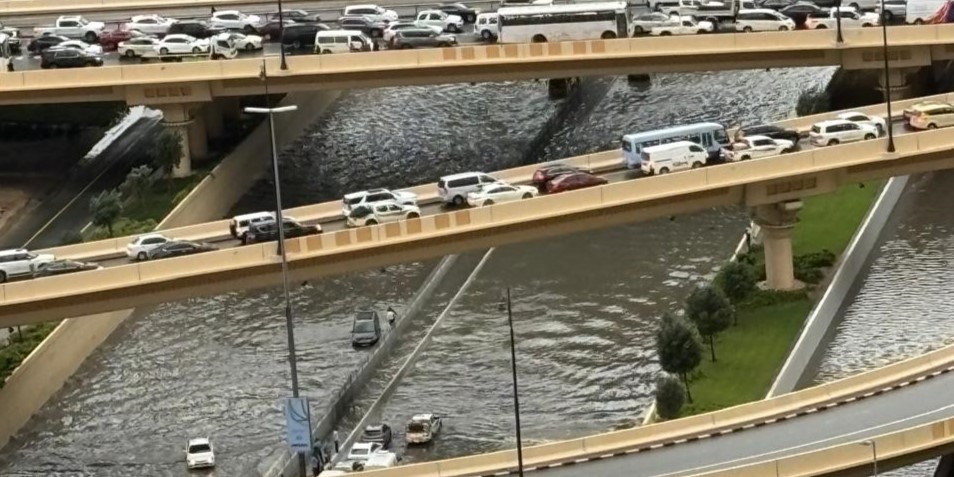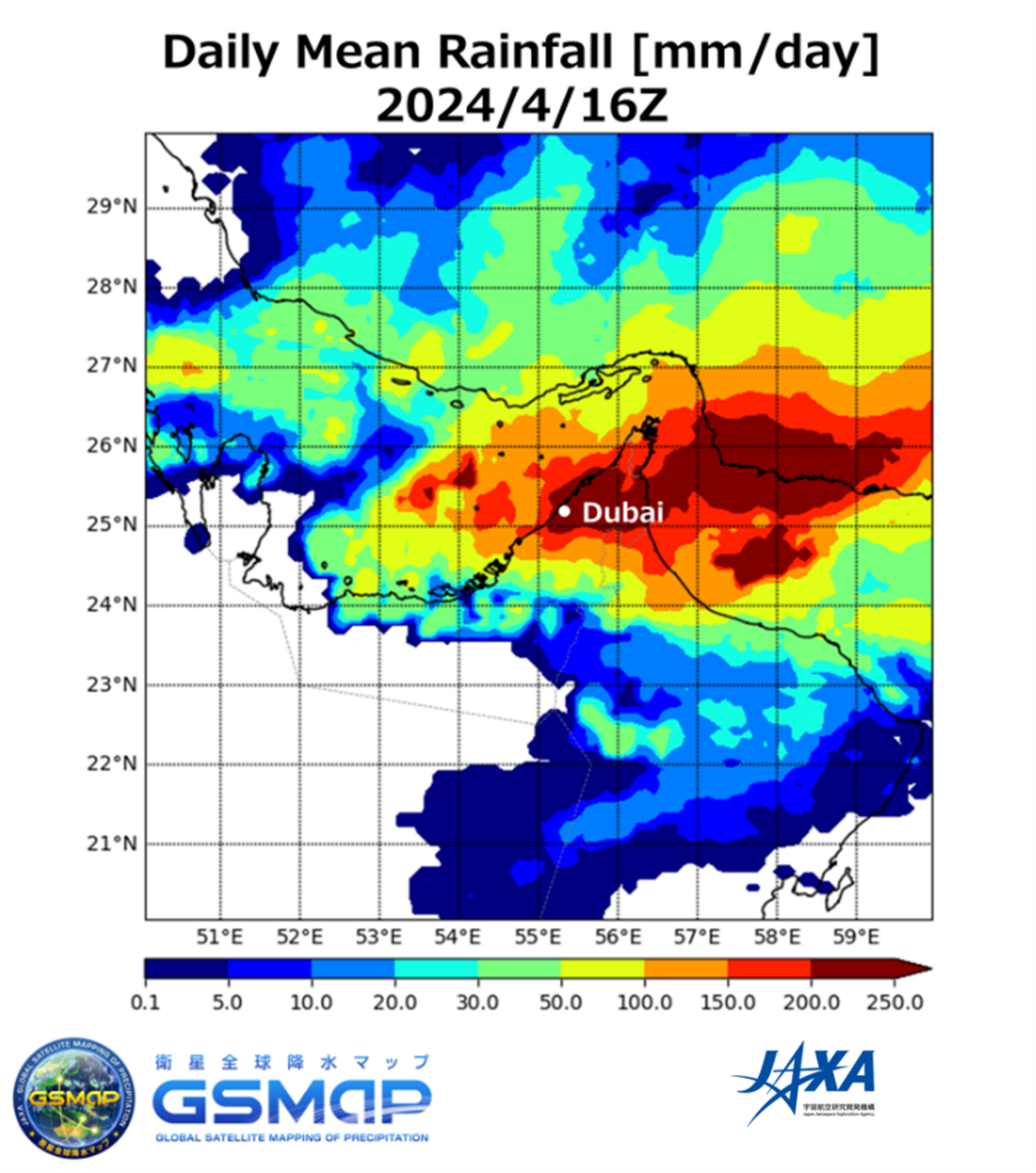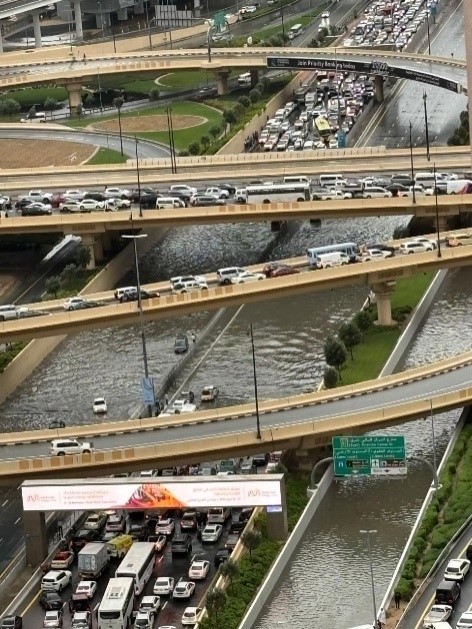Transportation systems were severely affected, with roads becoming impassable and flights being delayed or cancelled. This disruption had a significant impact on the daily lives of residents and visitors, as well as on businesses and tourism in the city. At least one person was killed in the flooding—a 70-year-old man who was swept away in his car in Ras al-Khaimah, one of the country’s 7 emirates, according to police. The UAE government announced remote working for most federal government employees, with schools staying closed in Dubai, which underscores the difficulty of the cleanup.
Neighboring countries were also hit by heavy rains, including Oman, where at least 20 people have died, including 10 schoolchildren and 1 adult swept away in a vehicle. Areas affected included Al Mudhaibi in the North Al Sharqiyah Governorate, Marmul Airport and Qalhat in the South Ash Sharqiyah Governorate. Teams from Royal Oman Police (ROP) and Oman’s Civil Defence and Ambulance Department Authority were called on to carry out multiple high-water rescues. Many of those rescued were trapped in vehicles or swept away by fast-flowing wadi waters. The ROP rescued around 35 people stranded in the Wilayat of Ibra. Around 21 people were rescued after a school bus was trapped in flood waters in the Wilayat of Nizwa.
In conclusion, the recent floods have had a significant loss impact, including damage to infrastructure, disruption of transportation systems, and economic losses. Growing infrastructure and likelihood of the region getting affected by such natural perils highlight the urgent need for further action to address and mitigate the effects in the region.
Insurance loss
The damage was significant to infrastructure, including roads, vehicles, buildings and public facilities, and will require significant resources for repair and restoration. Multiple residential units, commercial shops, malls, warehouses and industrial units were affected. Additionally, businesses that were affected by the floods may experience financial losses due to interrupted operations and damage to their properties.
Insurance penetration in the Middle East remains relatively low compared to global standards. The insurance penetration rate (including all lines of business) in Saudi Arabia stands at around 1.5%, approximately 1% in Qatar, and 2.75% in the UAE. These figures indicate that a significant portion of the population in these countries does not have adequate insurance coverage.
The low insurance penetration rate in the Middle East can be attributed to several factors. One of the main reasons is the lack of awareness and understanding of insurance products and their benefits among the general population. Many people in the region are not familiar with the various types of insurance available or how they can protect their assets and mitigate risks. Additionally, the insurance industry in the Middle East faces challenges in terms of market development and growth. While the region has witnessed significant economic growth and development, the insurance sector has struggled to keep pace.
While preliminary estimated insured property losses arising from the floods are likely to exceed USD 650 million it could reach as high as USD 850 million for the UAE, with the most affected emirate being Dubai. Large policies affected would have several primary policy conditions, and losses to insurance companies can vary significantly.
The estimated number of motor vehicles affected by floods is between 30,000 and 50,000 in the UAE, mostly concentrated in Dubai. Only the vehicles with comprehensive policies will be covered by insurance companies (TPL policies typically do not cover Nat Cat perils). Accordingly, the estimated preliminary insured loss for motor is likely to exceed USD 150 million but could reach as high as USD 250 million for the UAE. Claims are still developing, and this estimated number is subject to further change.
To evaluate the exposure at risk, Guy Carpenter has provided a map for potential flood- affected areas across the region, which is integrated into GC AdvantagePoint®, Guy Carpenter’s market-leading proprietary tool. Clients can overlay their current exposure and apply this layer to assess the current exposure at risk.
Impact on the insurance industry
After such an event, we may see some impact on the original insurance policies and reinsurance arrangements to cater for such an event. Below are some considerations:
- Insurance awareness: We expect this to increase among personal lines as well as the commercial and industrial sector.
- Insurance claims: Insurance companies may experience a surge in claims related to vehicle repairs, property damage, business interruption, liability and other types of coverage.
- Losses and financial impact: Depending on the size of loss, insurers may need to tap into their reserves or seek additional reinsurance support to manage the financial impact.
- Market dynamics: Insurers and reinsurers may review their risk appetite, revise their underwriting guidelines, and reassess their exposure and accumulation control, which in turn can impact pricing and competition.


